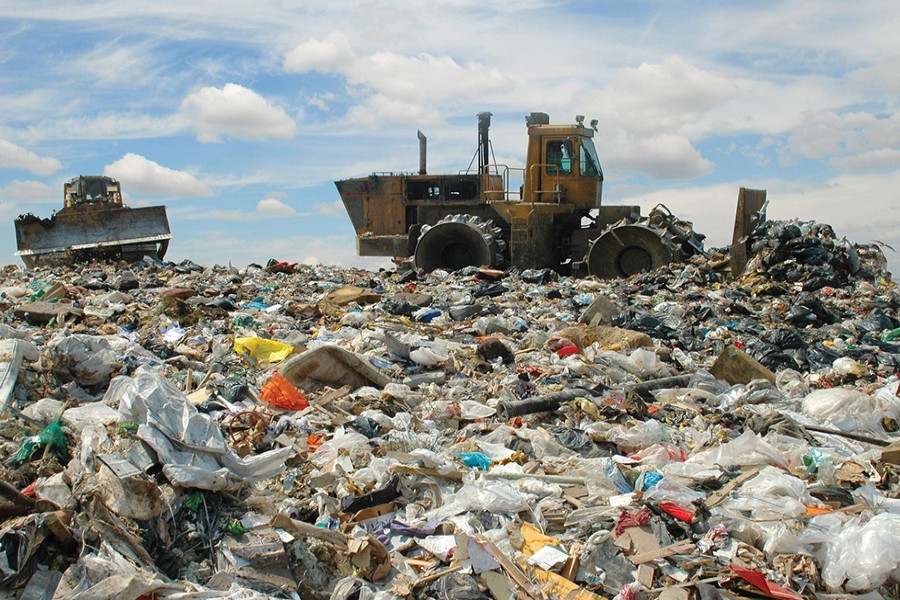
Published :
Updated :

Among the major causes of environment pollution in the country, toxic waste of mills and factories, recognisably the most talked-about culprit, continues to leave its ruinous impact. In earlier times, absence of appropriate technology was a factor responsible for not addressing the problem, especially in countries like ours. But the situation now is far different with effluent treatment plants (ETP) abundantly used all over the world to free the environment from untreated hazardous substance emitted from factories and industrial enterprises.
When it comes to effluent treatment plant, it is the Savar leather estate that first comes to mind -- for the wrong reasons, though. In fact, it is the failure of the authorities for long to dispose of mountains of toxic waste through well-functioning ETP in the leather estate that has made the term familiar to even those who are not conversant with the processes involved in the scientific waste disposal method. The leather estate makes frequent news as the faulty waste disposal method is keeping overseas buyers away, drastically affecting the country's leather export, despite relocation and some systematic measures by a number of entrepreneurs in the estate. Needless to say, a lack of internationally recognised waste disposal system by means of ETP is a serious lapse as regards fulfilling procurement norms of major leather importing countries.
Since leather is a major component of export basket with high potential of becoming the country's next growth driver, it draws media attention for obvious reasons. For the same reason, we sometimes come across scathing reports on the lack of required facilitation from the authorities. But what about numerous other waste generating factories that keep doing the foul play right under the nose of the authorities?
A report recently published in a local daily says there are as many as fifty factories, that too in government's industrial estates, which are run without ETPs. The result is what it should be -- strong stinking smell in the neighbourhood round the year, and water bodies including rivers polluted by reckless release of liquid and solid types of waste. It is unthinkable to inhale the foul stench of waste day in and day out without any recourse to relieve the choked lungs.
Setting up of ETPs in industrial units that emit chemical waste is mandatory. It is not just a promise or a verbal agreement but one that has to be done by the industry owners, and its functioning monitored by the sponsoring authority of the industrial estates. But as things are now, this important aspect appears to have received little attention. Allocation of land and utility services for the units are no doubt primary jobs of official sponsors like the Bangladesh Small and cottage Industries (BSCIC) under which these industrial estates and parks operate. But ensuring proper waste disposal is no less an important task, and it appears from the state of things that both the entrepreneurs and the BSCIC are yet to prioritise it as integral to setting up industrial units. This is evident from reports that neither the BSCIC nor the Department of Environment (DoE) are up for any remedial measures to address the health and environmental hazards posed by industrial units operating without mandatory ETPs in the industrial estates.
According to BISCIC sources, it is because of a lack of authority on the part of BISCIC to penalise offending units that has led the situation this far. In Dhaka division alone, there are around two dozen units without any proper waste disposal system --- not to speak of ETPs. In Chottogram division, too, the number of such units is well over a dozen. From reports published in the newspapers, it appears that many of the industrial units raise the issue of fund shortage for installing ETPs. True as that may be, observers do not consider this a good enough reason to skirt past the subject, as ETP is crucial to setting up industrial units that emit chemical waste.
Many of the units in BISCIC estates produce goods that are either already exported or have the potential for export. Exporting may be difficult, even impossible, if the scale of production increases to the extent of drawing attention of major international buyers. Currently, some of the exporting units are in a position to export in small volumes flouting environmental and procurement protocols of importing countries, but with the increase in productivity and market demand, the issue of compliance is sure to figure as a deterrent if the situation remains the same as it is now.
Not just for export, the reason these units need ETPs is to contain the harmful effects on environment. We have seen extremely harmful impact of the Hazaribagh tannery hub on the Buriganga river until it got relocated to Savar, but following the shifting, it is now the Dhaleshwary river that is critically under threat of pollution from liquid toxic waste generated by the leather units there. All these are the fallout of the absence of proper waste management, or in other words, the apathy of the authorities concerned.
Without mincing words it has to be stated that a sheer lack of understanding the multifaceted implications of industrial waste management has made things worse. The DoE and the BSCIC cannot shirk their responsibilities, and must come up with pragmatic measures to ride out the situation as early as possible.
wasiahmed.bd@gmail.com


 For all latest news, follow The Financial Express Google News channel.
For all latest news, follow The Financial Express Google News channel.